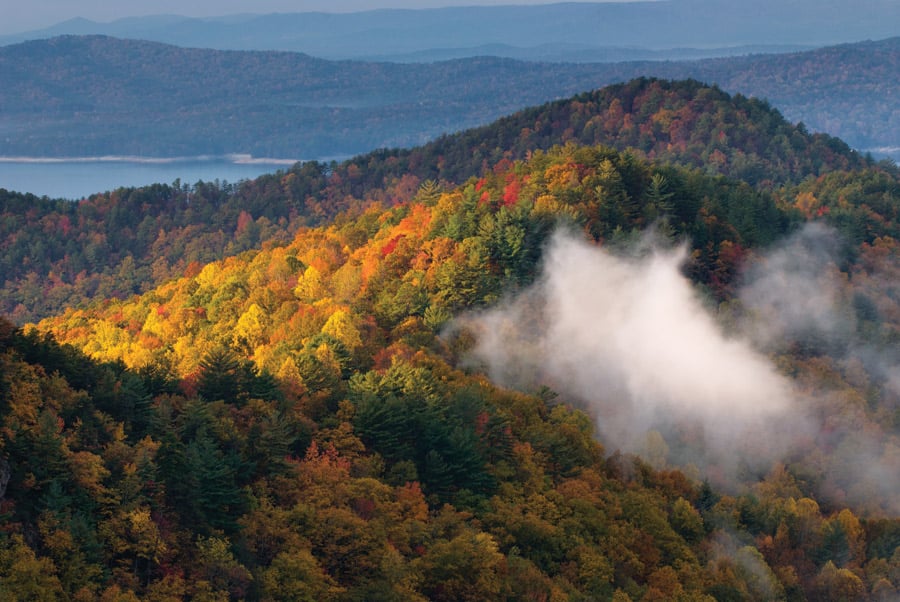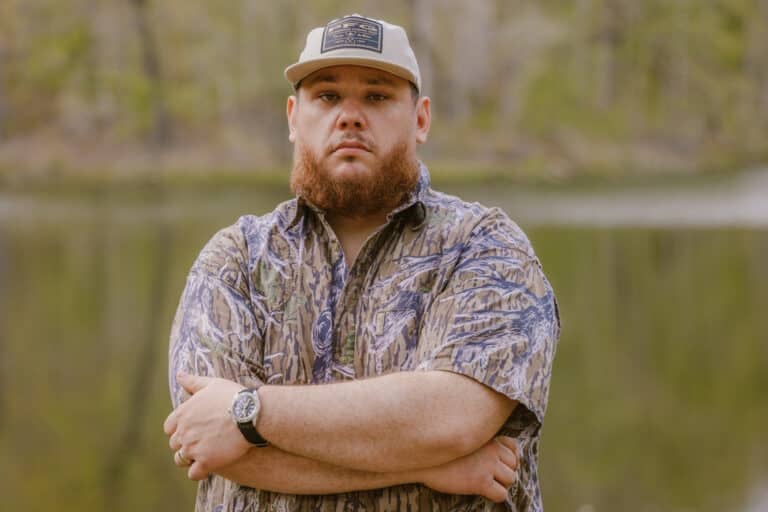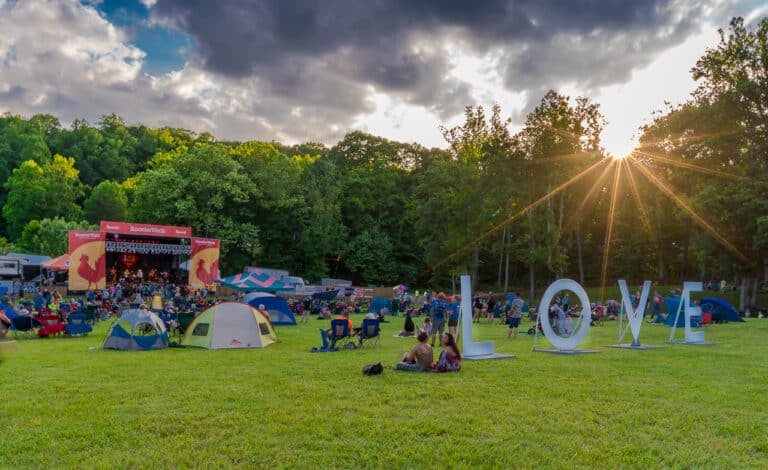When the fall colors are in full swing, it’s hard to go anywhere outside without seeing hordes of people with their cameras, furiously snapping away in an attempt to capture the magic and beauty of the foliage. But let’s be real: It’s easy to take a picture of the leaves in fall. What’s hard is to capture something interesting that sets your photograph apart. Take a look at these tips from four regional photographers on things to consider when heading out into the woods to shoot fall foliage.
Tommy Penick
Outdoor Commercial Photographer and Filmmaker
Hails from: Richmond, Va.
Been shooting for: 10 years
Based out of: 2009 Yukon and a 5’x10’ converted utility trailer
Go-to gear: Canon EOS 1DX, Sony A7s, Canon 16-35mm lens, Lowepro Photo Sport Pro camera bag
Fav places to shoot fall color: Blue Ridge Parkway, Maggie Valley, N.C., Watauga River, N.C.
Shoot an original concept.
Fall photos can be pretty cliché without some new twist on it, so try to incorporate other things into what could just be a regular landscape photo. Know your location and mix other activities in there.
Incorporate fall color in different ways.
Instead of just a panoramic view, use it as background, foreground, or even in your models’ clothing.
Use your histogram.
Watch your exposures. Oversaturated reds blow out really quickly. Make sure you’re not clipping in areas by using your in-camera histogram.
Don’t force it.
Be tasteful in post-processing. The saturation of the photos should be provided by the natural environment, not by Photoshop. Saturating it in post will make it seem really forced and fake. Good light on nice colors is going to look good on the camera, so don’t force it.
Use manual white balance.
Light reflecting off the leaves is going to throw off the auto white balance, so use the appropriate manual setting for your shots or find an object in your frame that can serve as a neutral reference.
Molly Wolff
Landscape, Nature, and Outdoor Wedding Photographer
Hails from: Fayetteville, W.Va.
Been shooting for: 15 years
Based out of: Scarbro, W.Va.
Go-to gear: Canon EOS 5D Mark III, Canon 24-70mm and 70-200mm lenses, Manfrotto tripod with 290 ball-head, Tiffen neutral density filters
Fav places to shoot fall color: New River Gorge, Gauley River, and the Blue Ridge mountains around Buena Vista and Lexington, Va.
Live for the golden hours.
Different times of day can create a variety of desired effects in fall foliage scenes. Most photographers live for the golden hours, near sunrise and sunset when the sky illuminates the subject and landscape with a soft, golden glow. This also helps to avoid harsh tones and highlights that you may encounter while shooting with the sun high in the sky. If you do find yourself shooting with a high and bright sun, consider using a polarizing filter.
Don’t let cloudy weather get you down.
To most outdoor enthusiasts, a clear and sunny day is your best friend. However, overcast and foggy days are fantastic for fall foliage photography in enhancing the mood and allowing saturated colors to really pop.
Find water.
Near water you will find endless photographic opportunities, including diverse vegetation at varying stages of changing color, beautiful reflections, and soft moving water. When you are near water, it is always easy to find a beautiful foreground subject to create an interesting composition.
Think tripod.
Although tripod use is a matter of personal preference, consider bringing one along for those cloudy days. When you are shooting a vast fall landscape, you are likely using smaller apertures and lower ISOs, which means you are likely decreasing your shutter speed. Doing this makes camera shake and blurring more apparent. Placing your camera on a tripod and even using a timed or remote shutter helps you achieve the sharpest image possible.
John Powell
Commercial, corporate, and editorial photographer
Hails from: Columbia, S.C.
Been shooting for: 17 years
Based out of: Columbia, S.C.
Go-to gear: Nikon D800 with a Nikkor 24-120mm zoom lens, Gitzo carbon fiber tripod with a Really Right Stuff ballhead, Lowepro Toploader, small Camelbak
Fav places to shoot fall color: Jocassee Gorges, banks of the Saluda River, and the South Carolina State House (for their gingko trees)
Use social media.
If you have flexibility in choosing when to go leaf peeping, take advantage of social media such as Instagram to connect with people who are visiting or living in the area where you are traveling in order to get current conditions.
Work with the sun, not against it.
Although the light can be harsh during the middle of the day, use this time to scout where you want to be for the evening sunset. The skies can wash out when shooting a backlit scene and you certainly want to avoid a sky with no color. Use the high sun to shoot backlit leaves. The undersides of the leaves are evenly lit and the color pops against the blue sky. If the sun is in the shot, position yourself so the leaves block most of the sun to prevent too much flare and stop the lens down to a small aperture to render a starburst effect. No filter needed!
Don’t go on the weekend.
If you arrive before or after the peak color, use elevation to your advantage. The Blue Ridge Parkway, for example, varies in elevation from less than 2000 feet to over 5000 feet within a short distance in Pisgah National Forest. The leaves change first at higher elevations. Avoid weekend travel if your schedule allows. There are far fewer drivers on the Parkway on Wednesday than on Friday and Saturday.
Check out Forest Service roads.
If you are feeling more adventurous than driving on pavement, do some research using an online map source for dirt roads, which may take you to less visited places. Keep in mind that online maps do not differentiate between private and public lands. The road you pick might not be navigable and gates can block forest service roads as well.
Steven McBride
Commercial photographer
Hails from: Henderson, N.C.
Been shooting for: 20 years
Based out of: Asheville, N.C.
Go-to gear: Canon Mark II, Fuji X-T1 mirrorless camera with a 23mm/f1.4 and a 56mm f/1.2, garbage bag or a water housing (I have both —one is cheap and easy and the other is pretty pricey.)
Fav places to shoot fall color: Max Patch, Black Balsam, Grayson Highlands State Park, and anything off the tourists’ radar
Play close attention to the weather, all the time.
I never go out during the pretty blue skies. I go out with the looming atmosphere of bad weather. You have to know what the weather’s going to be. I always look for cold fronts and storms that are coming through. Quite often when it’s just kinda clearing out, that’s when you get the most dramatic skies. Rainbows, clouds. It’s a risk, but sometimes you can go out and time it just right.
Go for sunrise.
It’s not so much for the golden hour, but mainly for the solitude. If you’re going to shoot on a busy weekend at a touristy place, try to go at sunrise. People don’t want to get up that early.
Change your perspective.
If you’re used to using a tripod, leave it in the car. Force yourself to do something different. If you’re in a low-light environment and you don’t have your tripod, you’ll be forced to use a rock and get low. Shoot everywhere other than head-height. I’ll take a tarp and lie down if it’s wet from the early morning dew. Wet leaves in the foreground can be really visually appealing. Use what you’ve shot before to steer you toward a different direction.







